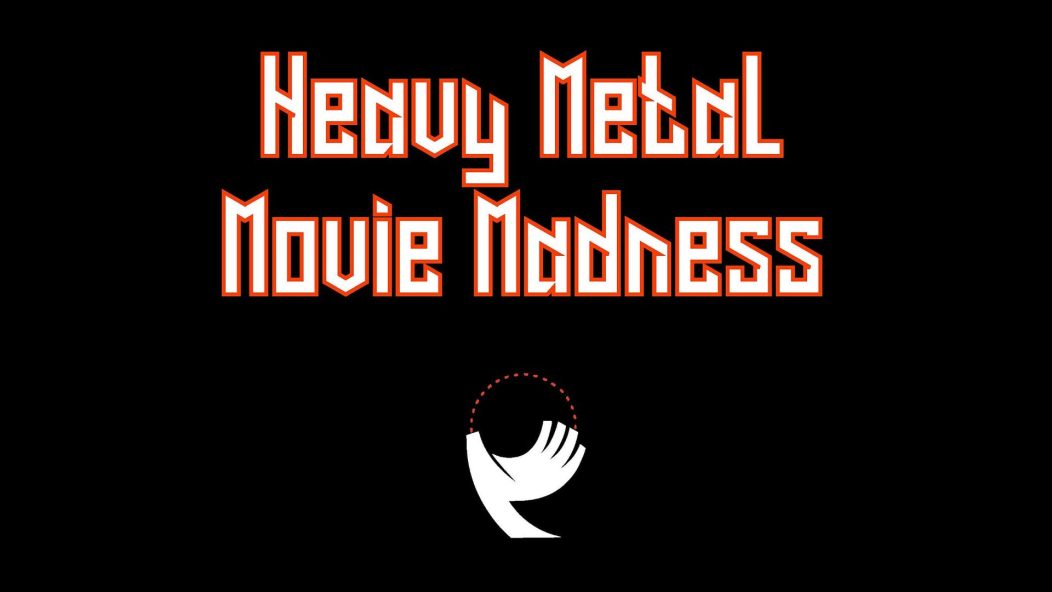
Heavy Metal Movie Madness #1: Folk Horror, Featuring "The Wicker Man" and "Midsommar"

…
The objective of this column is to highlight movies of the past and present while arguing their importance in understanding many of the heavy metal works we adore. This importance can range from direct references to more subtle cues like the themes and narratives to which bands have attached themselves. I’ve found many extreme music fans to be movie geeks as well, but that’s not always the case, which is fine too. But even the most diehard cinephiles have gaps in their celluloid experiences: this series aims to open doors for readers of all types and perhaps convince some to engage with movies they’ve never seen with metal albums they hold close and dear.
— Joseph Aprill
…
Metal has often taken inspiration in its visual and lyrical presentation via cinema — it’s true that literature is the bedrock medium, but film just as strongly energized (and continues to do so) the imagination of children who grew up between the 1960s to the 1980s. Movies had a strong impact upon the characters we now know as the giants and founders of heavy metal and extreme music. Of course, we have no further to look than the godfathers of it all, Black Sabbath. As the story goes, the original four were originally called Earth and needed to find a new name soon due to another English band claiming the same name. The band was rehearsing when bassist Geezer Butler observed a large group of people at the cinema across the road in line to see an Italian horror movie, Mario Bava’s 1963 film Black Sabbath. Butler apparently opined that it’s interesting that people will pay money to be scared, with fear generally conceived as a negative emotion or feeling, something to be avoided. The band not only decided to use the film’s title as their new name but also accurately resolved a seminal idea: making “scary” (read: extreme) rock music might prove just as successful as horror movies.
In that moment, it was cinema that helped form the mythological origin of heavy metal as we now know it.
“Kvlt.” Anyone with a passing knowledge of black metal has heard that word before; in wider extreme music circles, it’s been passed around with such ambiguous intent that any modern usage could equally be either praise or mockery of a band. It’s clearly a derivative of “cult,” an already controversial and nebulous term in academic circles and popular culture — when mentioned, many imagine apocalyptic and paranoid maniacs living somewhere remote, waiting or even preparing for imminent violence on a massive scale. At the same time, “cult” can describe mainstream beliefs from Christianity and Islam, measure adherence to political parties, and even refer to well-known individual personalities. Therein lies the discomfort: how does any given individual separates their own beliefs from those of religious/philosophical institutions while still avoiding the “cult” question? Popularity and mainstream acceptance helps separate one from the other, but the divide remains blurry in many cases.
For certain strains of metal, though, “kvlt” makes sense as a self-descriptor. It points to a zealous degree of passion and devotion to a style of music often misunderstood or misconstrued by outsiders. The same goes for many horror films, sometimes portrayed by the mainstream as artwork outright sinister, or even “pure evil,” even though those movies are seen more ambiguously by audiences. The sometimes shocking rituals of horror fans may test the moral assumptions of some, but the true appeal (and the understanding of horror) often goes unvoiced.
Director Ari Astor’s new film Midsommar explores a cult and is a perfect accompaniment to a classic horror film involving a pagan cult, 1973’s The Wicker Man directed by Robin Hardy.
…
…
Both films, Midsommar and The Wicker Man, fall under a genre called folk horror, attributed originally to film director Piers Haggard’s description for one of his own movies, 1971’s Blood on Satan’s Claw (which along with 1968’s Witchfinder General and the aforementioned The Wicker Man constitute what film critics call the unholy trilogy of folk horror cinema). This genre can range quite widely in scope, with some films not seeming all too similar but with some key traits. These are a rural or wooded settings and environments, a sense of isolation in the main character, pagan/atavistic beliefs or witchcraft among characters, and a culminative act of human sacrifice or ritualistic capital punishment.
All these elements combined create stories about humanity’s anxieties about lands barely touched by civilization where forces forgotten or thought banished may still lurk.
…
…
The Wicker Man begins with police officer Sergeant Howie, played by Edward Woodward, traveling by plane to the Scottish island of Summerisle. After encountering the local populace, Howie explains he’d received a mysterious letter on the mainland notifying him a young girl named Rowan Morrison had gone missing from the island. His inquires across town prove fruitless as most of the residents feign any knowledge of the girl, but in the process he soon realizes the island is populated by active pagans. It’s a terrifying prospect for the ardent Christian soldier Howie who witnesses people fornicating outside, children taught the sexual metaphors of maypole rituals, a Christian church in ruin, and women jumping through a flame hoping to be impregnated by a god. This ultimately culminates in one of the film’s best moments, when Howie is given audience with the island’s leader Lord Sumerisle, played by the great Sir Christopher Lee. Howie refuses to halt his investigations, and, as the island’s May Day celebration fast approaches, he shockingly discovers that the missing girl may well be used as a human sacrifice in an attempt to appease the island’s pagan gods.
The origin of the wicker man lore prior to the film derived from Roman records depicting druidic tribes with which Rome warred. Roman writers, including Emperor Julius Caesar, described the druids putting prisoners of war and slaves into giant wicker statue figures and then burning them as human sacrifices to their gods. While archaeology has failed to prove such structures ever existed — and it would be no surprise to find the Romans were overly hyperbolic in describing enemies they feared as savages — there has been archaeological evidence for human sacrifice in druidic Ireland, just not in the form of wicker men.
A number of heavy metal musicians have in years past taken inspiration from the Wicker Man, to the point of including tributes or references in their music. A couple like Cradle of Filth’s “Medusa and Hemlock” and The Lord Weird Slough Feg’s “The Wickerman” have been used as a general reference to druidic paganism. For Cradle of Filth specifically, the Wicker Man is a symbolic image about longing for a return to a pagan world; erstwhile, Slough Feg cites its use in the Sláine comic series which was itself based on Celtic mythology. And perhaps one of the most popular wicker man uses in metal history was Iron Maiden’s “The Wicker Man,” the band’s first single after their return-to-glory album that saw singer Bruce Dickinson and guitarist Adrian Smith rejoin the band. Unfortunately, if you dive into the lyrics, you’ll be a bit puzzled as to how the song relates to the eponymous film — more likely it seems to deal with striving to live an authentic life even though death is at every corner, with the usage of a wicker man serving as one ominous warning of cataclysm. While the lyrics are lacking clear filmic influence, the song’s music video instead showed it clearly: a businessman is chased by Eddie into a giant wicker man before its set ablaze. It’s a nice fiery tribute by Iron Maiden to their home country’s film heritage, as well as a jab at corporate outsiders.
…
…
Then there’s Agalloch, who perhaps have made the strongest connection to the movie to date. Their 2008 The White EP was a response to their previous album Ashes Against the Grain using callbacks to their past like strong neofolk inspirations, field recordings, and even film samples. The The White EP directly samples from The Wicker Man for three of its songs: “The Isle of Summer,” “Sowilo Rune,” and “Summerisle Reprise.” The latter two in particular pull from some of Chritopher Lee’s best scenes where he plays Lord Summerisle with overflowing wit, rebuking Howie’s Christian repulsion to the pagan lifestyle of the island community. This all certainly fits within Agalloch’s stylistic roots in both black metal and neofolk where an open hostility to Christianity is sometimes accompanied with a return to pagan traditions or general spiritual reverence to nature. Further, while far more thinly connected, it’s interesting to note Agalloch’s cover of neofolk band Sol Invictus’ song “Kneel to the Cross” (clearly critical of the Christian faith) makes use of the first line from the traditional English folk song “Sumer is Icumen in” of which a variation is sung near the end of The Wicker Man.
…
…
While folk horror had a glory period in the British film industry of the 1970s, there have been movies both continuing the genre tradition and evolving it in distinctive ways. One is surely recent indie hit Midsommar which has galvanized strong reactions from audiences just as director Astor’s debut film Hereditary did last year. Midsommar focuses on college student Dani Ardor who seems heading toward an imminent breakup with her emotionally unavailable boyfriend Christian Hughes until a sudden family tragedy launches her into a spiral of grief. Time passes, but it’s clear the conflict between Dani and Christian remains unresolved when Dani discovers her boyfriend has been planning to travel to Sweden for a month-long commune festival with his grad school friends (Mark, Josh, and Pelle) with no initial intent to bring her along. Christian’s guilt wins the day despite his friends’ apprehension, so Dani accompanies them abroad… upon arrival, though, Pelle, who is a native Swede and resident of the commune, introduces the group to his brother and their own travel companions, Simon and Connie, who welcome them all to partake in some magic mushrooms.
The group’s trip goes well at first with soothing psychedelic experiences mixed with some humor about the Swedish midnight sun, until Dani takes a turn for the worse when reminded about her family’s recent tragedy, sending her into a mad run until she passes out. After being discovered by the others then sleeping through the bright night, they proceed on a long walk to Pelle’s commune, Hårga. The residents of the commune, all dressed in floral embroidered white tunics, are overly friendly, but something does seem a bit off to Dani and the others. Any lingering suspicions come to the forefront the next day when the commune’s traditions and rituals begin to become all too clear.
Midsommar and The Wicker Man differ in a few ways, e.g. the conflict with Christianity is readily present in the latter but almost nonexistent in the former, while Midsommar is unique in its use of the whole narrative as a metaphor for a romantic relationship that needs to end. One clear line that tethers both, however, is the element of human sacrifice. You could anthropologically associate modern revulsion at human sacrifice to the major religions of the world prohibiting the act through narrative or outright admonishment — in particular, Abrahamic religions (e.g. Judaism, Christianity, and Islam) root their prohibition in the story of the binding of Isaac from the Book of Genesis. The old testament’s god calls on Abraham to sacrifice his only son, but right before the ritual is completed, god claims Abraham’s faith has been proven steadfast and calls off the act. This indicates that human sacrifice is unneeded, and of course a ram was used to replace Isaac in the sacrifice.
There’s also the self-sacrifice of Jesus on the cross, as sacrifice of human and divine, further cementing the notion that all blood sacrifices were unnecessarily as long as faith in the Christian god is shown (the diversions of all of that often serving the basis for the many schisms of Christian theology). As the Abrahamic faiths have spread out and conquered much of the pagan and native beliefs of the world, so too came the prohibition of human sacrifice. This carried over to modern scientific minds where any acts of supernatural devotion let alone human sacrifice seem clearly inappropriate.
…
…
It’s no wonder that human sacrifice appears in heavy metal lyrics and imagery just as it does in horror films. You can find it in early Venom and Bathory songs about sacrificing virgins to satan up to Viking or Celtic bands like Amon Amarth and Cruachan penning lyrics in far more pagan settings of worship. It’s a subject that for sure has much use in gleefully shocking audiences, but even with a bit of depth behind it all, the concept shows a drama meant to illustrate the tension between modernity and the past, or likewise the tension between civilization and nature.
Heavy metal like horror has often been fascinated by that which repels most people and even might repel the artists themselves, but that morbid curiosity still lingers. It’s a curiosity that our anthropological past may not be as far away as it seems. It’s the idea that modernity or Christian morality might be less a steel wall than it is a thin veil keeping our own demons at bay.
…
The Wicker Man can be streamed currently on The Criterion Channel or rented/purchased digitally on most digital video platforms. Midsommar can be digitally purchased on most digital video platforms as well; the movie was released on Blu-Ray last Tuesday.
…
Support Invisible Oranges on Patreon and check out our merch.
…











